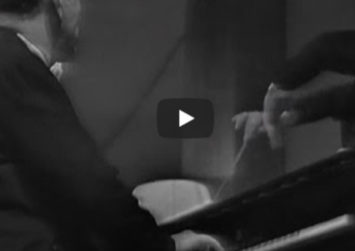Chopin’s Top 14 Works
Updated:
As a pianist and lover of classical music, I have always been fascinated by the works of Frederic Chopin. His compositions are known for their technical difficulty, emotional depth and sheer beauty. In this article, I’ll talk about Chopin’s 14 best works, giving you an idea of his creative process and highlighting some of his most emblematic pieces.
Chopin was a virtuoso pianist and composer who lived in the 19th century. He was born in Poland, but spent most of his adult life in Paris, where he became a prominent figure on the city’s music scene. Despite his relatively short life (he died at the age of 39), Chopin left a vast body of work that continues to captivate audiences around the world.
In this article, I will be focusing on Chopin’s piano music, which makes up the majority of his output. I will be exploring his most famous pieces, such as the “Raindrop” Prelude and the “Fantaisie-Impromptu,” as well as some lesser-known gems that are equally deserving of attention. Whether you are a seasoned classical music aficionado or a newcomer to the genre, I hope that this article will provide you with a deeper appreciation for the genius of Frederic Chopin.
Here are some popular Chopin songs that you will love
There’s certainly a lot left out, and if you remember any Chopin music that inspires you and isn’t on the list, let me know in the comments!
14. Chopin – Waltz in C Sharp Minor (Op. 64 No. 2)
Here, one of Chopin’s most beautiful and captivating waltzes, you’ll discover a beautifully soft and playful melody. In this wonderful composition we find the perfect balance between emotion and speed in the surprising fingerings created by Chopin.
13. Chopin – Nocturne (Op.9 No.2)
Chopin’s nocturnes are among the best-known works of classical piano. Chopin’s music here is absolutely intense, dramatic and emotional, with extremely sophisticated harmony. The “Nocturne op.9 No.2” is one of Chopin’s best-known and best-loved works and is often considered one of the most beautiful pieces of classical music of all time.
12. Chopin – Nocturne (Op.9 No.1)
This is another well-known piece by Chopin, an incredibly beautiful and romantic piece of piano music. Chopin uses and abuses chromaticism played softly on the piano. It’s a technically difficult piece to perform fully, as it requires the pianist to play with a lot of emotion.
11. Prelude in D-Flat Major, Op. 28, No. 15, ‘Raindrop’
The Prelude in D-Flat Major, Op. 28, No. 15, also known as ‘Raindrop’, is one of Chopin’s most famous preludes. The piece is characterized by its use of a repeating A-flat in the left hand, which creates a sense of a constant rainfall. The piece is also notable for its dramatic contrasts between the stormy opening and the peaceful middle section.
10. Chopin – Revolutionary Etude (Op. 10 No. 12)
This is a study dedicated to the left hand, a rather somber piano piece that shows, above all, the strength of the piano’s bass sound. It takes a lot of dedication and many hours of study to play correctly.
9. Polonaise in A-Flat Major, Op. 53, ‘Heroic’
The Polonaise in A-Flat Major, Op. 53, also known as ‘Heroic’, is one of Chopin’s most virtuosic works. The piece is characterized by its grandeur and power, as well as its technical demands. The opening fanfare and subsequent march make this piece a favorite among pianists and audiences alike.
8. Scherzo No. 2 in B-Flat Minor, Op. 31
Scherzo No. 2 in B-Flat Minor, Op. 31 is a dramatic and intense work that showcases Chopin’s ability to create complex and beautiful melodies. This Scherzo is characterized by its rapid tempo and intricate piano runs. The middle section of the piece is particularly notable, with its haunting and lyrical melody.
7. Barcarolle in F sharp major Op. 60
Chopin’s Barcarolle is a virtuosic and lyrical piano piece that captures the essence of a Venetian gondola ride. The piece is in ternary form, with a flowing and graceful melody that is contrasted by more intense and dramatic sections. The use of arpeggios and intricate ornamentation showcases Chopin’s mastery of piano technique and his ability to create rich and evocative musical landscapes.
6. Chopin: Fantaisie-Impromptu in C-Sharp Minor, Op. 66
The opening motif is a rapid and flowing arpeggio that sets the tone for the piece, leading into a hauntingly beautiful melody that is both melancholic and expressive. The contrast between the delicate, lyrical passages and the powerful, stormy sections adds to the emotional depth of the piece. Overall, the Fantaisie-Impromptu is a captivating exploration of Chopin’s unique and evocative musical language.
5. Chopin – Nocturne in C Sharp Minor (No. 20)
The delicate touch and nuanced phrasing required to bring out the nuances of this nocturne make it a challenging yet rewarding piece for pianists to master. As pianist, I would highly recommend this nocturne to anyone seeking to explore the emotional depth and beauty of Chopin’s music.
4. Chopin: Sonata No.2 in B-flat Minor, Op.35
This incredible sonata by Chopin is one of the most impressive works ever composed for the piano. The piece is divided into four distinct movements that can be somewhat daunting and extremely beautiful. I believe this is one of the most difficult pieces to play on the piano due to the magnificent technique and sonority that Chopin imprints on this sonata. The third movement of the work introduces us to one of the masterpieces of classical piano, the incomparable Funeral March.
3. Piano Concerto No. 2 in F Minor, Op. 21
Chopin’s Piano Concerto No. 2 in F Minor, Op. 21 is another masterpiece that displays Chopin’s unique style as a composer. The concerto was composed and premiered in 1836, and it is known for its lyrical and expressive melodies. The concerto is also divided into three movements: Maestoso, Larghetto, and Allegro vivace. The first movement is a grand and majestic introduction that leads into a beautiful and expressive second movement. The third movement is a lively and energetic finale that showcases Chopin’s virtuosity as a pianist.
2. Andante Spianato et Grande Polonaise Brillante
The Andante Spianato and Grande Polonaise Brillante is a beautiful and virtuosic piano piece composed by Frédéric Chopin. The Andante Spianato, meaning “smooth and flowing,” showcases lyrical melodies and delicate phrasing, while the Grande Polonaise Brillante, meaning “brilliant Polish dance,” is a lively and dazzling display of technical skill and passion.
1. Ballade No. 1 in G Minor, Op. 23
One of Chopin’s most popular works, Ballade No. 1 in G Minor, Op. 23 is a masterpiece of the Romantic era. This piece is characterized by its dramatic opening, which sets the tone for the entire composition. The Ballade is structured in a way that creates a sense of tension and release, with the main theme returning throughout the piece in different forms.
Discover more famous Chopin songs
Even today Chopin is recognized as one of the most influential musicians of all time, but did you know that Chopin has many other works divided into various musical styles such as: Nocturnes, Studies, Preludes, Mazurkas and much more.
… Pin this post for later!
More posts for you
- Piano Evolution: A Brief History Of Keyboard Instruments
- 11 Interesting Facts You Didn’t Know About Chopin
- 10 Famous “Spectacular” Classical Music
- 20 Classical Piano Pieces You’ve Heard But Don’t Know The Name










